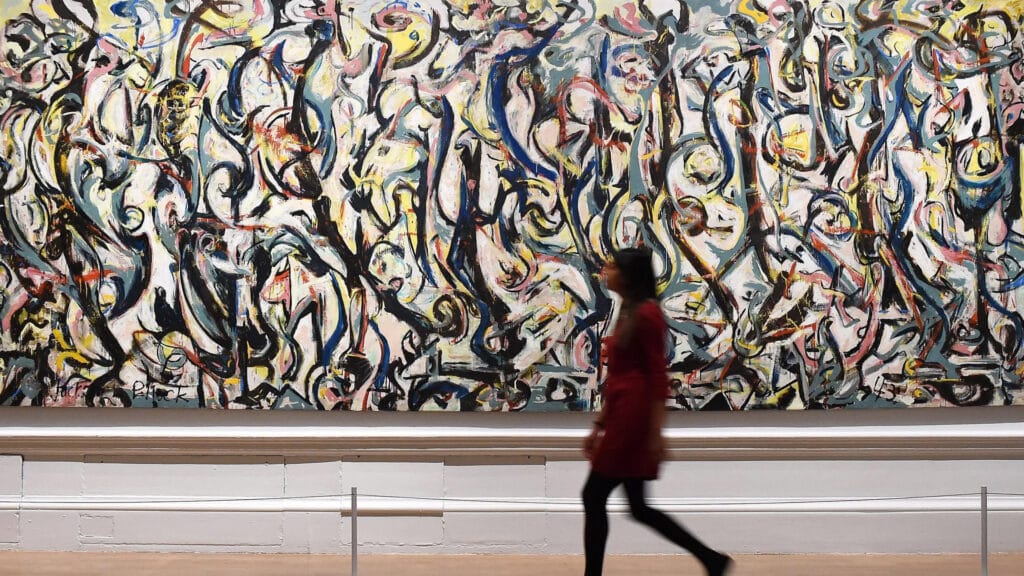
Researchers have solved the mystery behind the bright turquoise in Jackson Pollock’s «Number 1A, 1948.» With new chemical tests, they identified the pigment as manganese blue, a synthetic color used in paints and swimming pool cement until its discontinuation in the 1990s, according to Associated Press.
The nearly nine-foot-wide canvas, housed at New York’s Museum of Modern Art (MoMA), is famous for Pollock’s signature drips, splatters and handprints pressed into the surface. While earlier studies had pinpointed the reds and yellows, the origin of the blue remained unclear — until now.
In their study, published in «Proceedings of the National Academy of Sciences,» scientists used laser-based techniques to extract a molecular «fingerprint» of the pigment from tiny paint samples. This fingerprint marks the first verified evidence of Pollock working with manganese blue.
The team also examined the pigment’s chemical structure to understand why the color remains so vivid over time. These findings may help conservators better preserve Pollock’s works and enable experts to identify authentic pieces and detect forgeries more confidently.
Study co-author Abed Haddad of MoMA noted that while Pollock’s process appeared chaotic, it was actually quite methodical. The researchers noticed a similar careful approach in their own work as they uncovered the painting’s hidden chemistry.

